
How to Buy The Best ATM Paper
We sometimes encounter companies that are shopping for ATM paper and are only concerned with finding the lowest price. And we understand that. Paper has become commoditized and differences can often be shades of grey. But sometimes those little differences can add up to cause bigger problems, costing financial institutions or Individual ATM Deployers (IADs) more in the long run.
Yes, price is a critical component of the purchase equation, but there are some other considerations buyers should be mindful of when considering options. Following is a guide to help make sure you purchase the best ATM paper for your particular needs, and are getting your money’s worth.
ATM Paper Types
Not all paper performs the same. And the wrong type of ATM paper often results in an inferior product that can frustrate customers, and cause paper jams that require costly maintenance and repair. Following are a few basic variations in paper.
1. Bond vs. Thermal: ATM operators and paper manufacturers have essentially switched entirely from bond to thermal paper for a number of reasons. While bond paper is technically less expensive, thermal paper has a lower cost of ownership over the long haul. Here’s why. For one, thermal paper doesn’t require ink cartridges or real ribbons, which must be replaced periodically. Secondly, they are fast, easy to maintain, and almost always have more paper on each roll. Lastly, they produce a higher quality product.
2. Low vs. High Sensitivity: The sensitivity of thermal paper refers to the degree to which it reacts to a given amount of heat or energy. When it comes to matching the right kind of paper with a particular machine, this is one of the most important factors to consider. Selecting high vs. low sensitivity ATM paper not only impacts the image quality and shelf life of the receipt, it can also lead to large savings for some ATM owners.
There is an inverse relationship between the energy of the printer and sensitivity of the paper. A high-energy printer can deliver a satisfactory product on paper with low sensitivity, while a low-energy printer requires paper with high sensitivity to achieve acceptable results. Because low sensitivity paper is less expensive, it pays to invest in a high-energy printer in order to save on paper costs over time.
3. BPA Free Paper: Many companies, and their customers, have growing concerns regarding the environmental impact of paper products. While there is a wide spectrum of environmentally friendly paper options, one of the most prevalent concerns among paper manufacturers is the use of Bisphenol A (BPA).
BPA is a mass-produced industrial chemical used primarily to make polycarbonate plastics and epoxy resins. It is commonly applied to thermal receipt paper in order to help produce the image. In Jan 2010, the US FDA announced that recent studies provided reason for concern about the potential adverse health effects of BPA in infants and children, especially for applications with food. If your company shares this concern, you should make sure that your supplier offers paper that’s free of BPA.
Beware of Paper Shortages and Product Swaps
It would be great to say that we live in a world where no one cheats. Unfortunately, that’s not always the case. And some ATM paper suppliers have learned a few parlor tricks to help compensate for shrinking margins. So, buyer beware.
Here are some specific things to look out for:
1. Paper Shortages: A low cost ATM paper roll does not always mean you’re getting a “good deal.” Rolls can be loosened so that there are actually fewer receipts per roll, which means you’re paying more for the total number of receipts that each roll produces.
The first defense against this trick is to partner with a reputable supplier. But you still may want to verify that you’re getting the footage that you expect. So, ask to see the rolls that you purchase, particularly for large orders. Push against the core in the center of the roll, and see if there’s any give. If the paper “cones” out, that means it’s loose and may have fewer receipts than it should. ATM paper rolls should be wound tight, so that they can accommodate a maximum number of ATM receipts, giving you more bang for your buck.
2. Product Swaps: How do you actually know you’re getting the specific ATM paper the supplier quoted? Would you really be able to tell if the paper has the top-coat you ordered? Unfortunately, it can be difficult to verify that the paper you purchased matches the sales specs. And, not only will some suppliers take advantage of this dilemma, but honest mistakes can happen as well.
Don’t hesitate to request to have your paper “tested” to make sure it has all the features you paid for. Experienced suppliers with good customer service will have no problem supplying verification to make a customer comfortable and earn their trust.
Summary
Customers come to ATMs expecting to walk away with two things: cash and their receipt. And the type of paper used not only impacts the customer experience, it affects the performance and overall cost to service the ATM as well. Be sure to look a little deeper than the final cost when considering what type of ATM paper to choose.
Feel free to contact us to discuss optimizing your ATM paper receipts. Our mission is to make every transaction count.
And visit our online store for stock ATM paper options. We offer free shipping for all orders placed online.
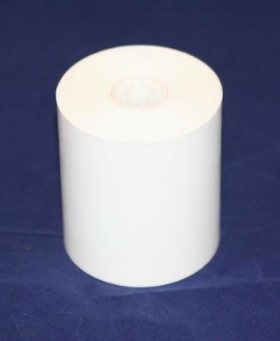
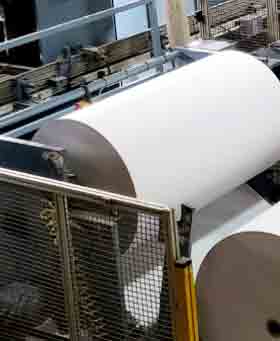
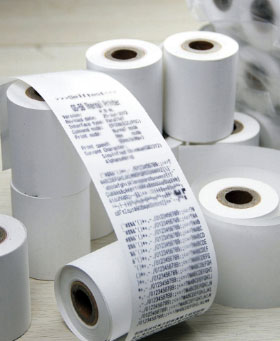
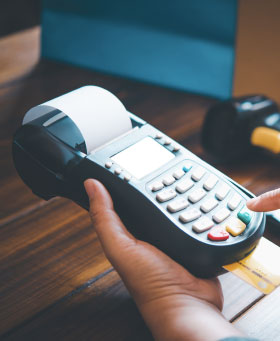

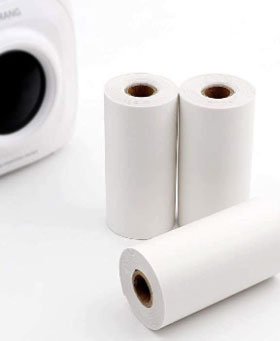









Why did you stop at 2016. You have a continual problem with old information that is, like you, worthless. Edita Erroll Hercule
Unfortunate, but understandable. Hoping the future of thes challenge races will be brighter come Fall. Tierney Akim Tab
Gud evning po and2 na po ang sagot.ma.am pahnge naman po ng question.qng panu po nakuha ung sagot.. At tanung po ult.magpapafle ult po sana aq kaso nal8 aq nag pag flng.kailn ult po b ung flng?f my idea po kau.salamat po Debby George Erastus
Can TRADER archieve strenght and more followers by not having publicity and only depend on the users? Eolanda Web Zinnes
Good post. I definitely appreciate this website. Stick with it! Lotty Buck Kannan